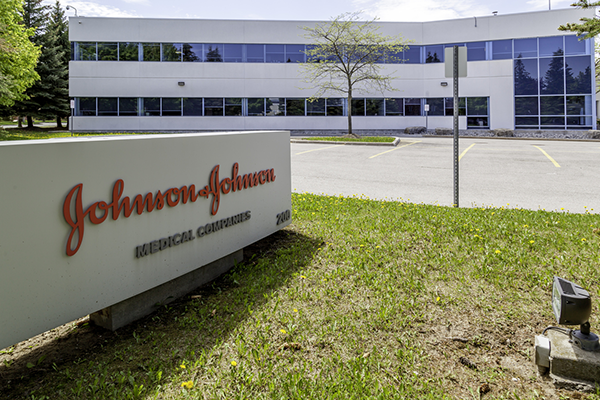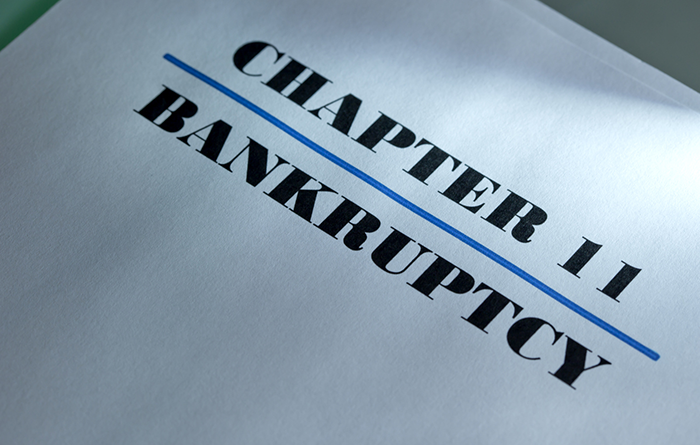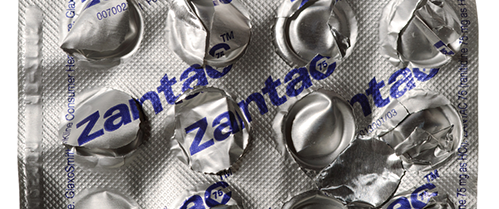
by manovermachine | Apr 10, 2023 | 3M Earplugs Hearing Loss
Federal appeals court judges on Tuesday heard from Paul Clement, a lawyer for Aearo Technologies, a subsidiary of 3M. Clement urged the three-judge panel of the 7th Circuit Court of Appeals in Chicago to reverse a bankruptcy court order which allowed plaintiff lawsuits to move forward against 3M.
Aearo manufactured the combat arms earplugs and filed for bankruptcy last July. Clement argued that there is “complete overlap” between the facts and legal defenses in earplug lawsuits against the two companies, and stated that the “automatic stay” which shields Aearo from lawsuits while it is bankrupt should also apply to 3M.
Judges appeared skeptical of this argument. Judge Frank Easterbrook pressed Clement on Tuesday to explain how there can be exceptions to the bankruptcy law, which applies the shield only to the bankrupt company. He said the U.S. Supreme Court has consistently ruled against exceptions in bankruptcy law.
“If this maneuver works, why won’t it automatically happen every time a defendant in an MDL gets uncomfortable with the MDL court’s rulings?” Judge David Hamilton asked.
David Frederick, representing the plaintiffs, told the panel that 3M “contrived this bankruptcy to help itself, not Aearo or its creditors.”
He argued that as long as 3M is able to cover the earplug liability, there is no reason it should be shielded, and that if 3M ever became unable to pay, it should have to file for bankruptcy itself.
“The point of the bankruptcy process is to take the bitter with the sweet,” he said.
Veterans and service members have called for the dismissal of Aearo’s bankruptcy, as has the judge overseeing the consolidated MDL in Florida, who called the bankruptcy “wholly contrived.”
The litigation against 3M and Aearo is the largest-ever MDL in U.S. history, with nearly 330,000 cases filed and nearly 260,000 pending cases, according to court statistics from March 16. The next-largest MDL, the Johnson & Johnson talc litigation, has 38,000 cases.
3M has lost 10 of the 16 cases that have gone to trial so far, with about $265 million being awarded in total to 13 plaintiffs.

by manovermachine | Apr 10, 2023 | Ovarian Cancer and Talcum Powder
Johnson & Johnson announced on April 4 that its subsidiary LTL Management LLC (LTL) has re-filed for voluntary Chapter 11 bankruptcy protection to obtain approval of a reorganization plan that they believe will equitably and efficiently resolve all claims arising from cosmetic talc litigation against the Company and its affiliates in North America. To that end, the Company has agreed to contribute up to a present value of $8.9 billion, payable over 25 years, to resolve all the current and future talc claims, which is an increase of $6.9 billion over the $2 billion previously committed in connection with LTL’s initial bankruptcy filing in October 2021. LTL also has secured commitments from over 60,000 current claimants to support a global resolution on these terms.
– Source: Yahoo News
This follows on the heels of the 3rd Circuit Court of Appeals in Philadelphia ruling last Friday that Johnson & Johnson and its subsidiary LTL Management could not delay a court order dismissing the Chapter 11 bankruptcy they initially filed in October of 2021. The reason for dismissing the bankruptcy filing in the first place was that J&J is not facing financial distress, and is therefore not entitled to the bankruptcy protection filed by its subsidiary.
Plaintiff Response
Andy Birchfield, a plaintiffs’ lawyer at law firm Beasley Allen, said on Tuesday that claims “could easily be resolved if Johnson & Johnson would stop playing games and abusing the bankruptcy court process.”
The judge overseeing the case on Tuesday said he planned to dismiss the J&J unit’s bankruptcy as soon as today. That would allow lawsuits and trials to resume in courts across the United States.
Securing widespread agreement among plaintiffs for a settlement could ease the path of J&J’s subsidiary if it files a second bankruptcy. In the first case, litigants resisted settling, balking at the company’s initial $2 billion offer. Court-ordered mediation sessions failed to produce an agreement.
Even with a prearranged settlement, however, a minority of talc plaintiffs could ask the bankruptcy judge to dismiss the Chapter 11 filing yet again, triggering the same hearings and rulings that led the appeals court to invalidate the tactic in the first place.
– Source: Reuters
The J&J Statement
“The Company continues to believe that these claims are specious and lack scientific merit,” said Erik Haas, Worldwide Vice President of Litigation, Johnson & Johnson. “However, as the Bankruptcy Court recognized, resolving these cases in the tort system would take decades and impose significant costs on LTL and the system, with most claimants never receiving any compensation. Resolving this matter through the proposed reorganization plan is both more equitable and more efficient, allows claimants to be compensated in a timely manner, and enables the Company to remain focused on our commitment to profoundly and positively impact health for humanity.

by manovermachine | Apr 3, 2023 | Ovarian Cancer and Talcum Powder
Chapter 11 bankruptcy dismissed
The 3rd U.S. Circuit Court of Appeals based in Philadelphia on Friday ruled that Johnson & Johnson, on behalf of its subsidiary, LTL Management, could not delay a court order dismissing its bankruptcy. Johnson & Johnson had sought to stay the court order while the company plans to appeal to use the bankruptcy to resolve tens of thousands of lawsuits over its talc products. LTL has not yet filed a formal petition to the U.S. Supreme Court.
In January, the 3rd Circuit had ruled that neither LTL nor J&J were in financial distress, and therefore did not have a legitimate need for bankruptcy protection. The judge overseeing the case, U.S. Bankruptcy Judge Michael Kaplan indicated that as soon as the 3rd Circuit issued a formal mandate to end the bankruptcy, he would allow talc lawsuits to resume. The 3rd Circuit on Friday directed Judge Kaplan to dismiss LTL’s Chapter 11 case.
There are more than 38,000 lawsuits alleging that the company’s baby powder and other talc products are contaminated with asbestos and have caused ovarian cancer and mesothelioma. J&J maintains that its consumer talc products are safe and asbestos-free. They stopped selling the talc baby powder in the U.S. and Canada in 2020 and announced that they intended to discontinue the product worldwide in 2023.

by manovermachine | Feb 23, 2023 | Zantac Linked Cancers
Last week Bloomberg Businessweek published a detailed report on the development of the heartburn drug Zantac, which revealed that Glaxo’s own scientists along with various independent researchers warned the company about the potential danger of the drug for years.
Thousands of pages of documents, many of which have never been made public, were reviewed by Bloomberg Businessweek. The documents show that the FDA considered the cancer risks when they approved ranitidine in 1982. Glaxo, however, had not shared a critical study at that time by a Glaxo scientist that found that when combined with various levels of nitrites, which are found in the human digestive system, high levels of the carcinogen N-Nitrosodimethylamine (NDMA) were produced. Scientist Richard Tanner’s report was not shared with the FDA, the associate director of clinical research in the US, or the senior medical adviser for gastrointestinal research. Glaxo now says that when testing lower levels of nitrite which are closer to conditions in an actual human stomach, Tanner did not find NDMA.
Storage Issues
Glaxo also “backed flawed research designed to minimize concerns and chose not to routinely transport and store the medication in ways that could have eased the problem.” It turned out that ranitidine wasn’t always stable. It is sensitive to heat and humidity, and when exposed to too much of either, it can degrade. This creates conditions for NDMA to form in the drug itself. Consequently, the product label included instructions to store the pills in a dry place that didn’t exceed 86 degrees Fahrenheit.
Fast Forward to 2019
It wasn’t until 2019 that ranitidine, both in Zantac and in generic brands, was found to be tainted with high levels of NDMA, a probable carcinogen, before being ingested. Valisure, a private lab operating independently of the FDA began testing and said it had found extremely high levels of NDMA in Zantac and several generic versions of ranitidine. The FDA then issued an alert but said it would conduct its own tests of ranitidine. Within a month, at least two dozen countries removed the drug from store shelves, and several makers of the drug acted on their own to stop the supply. This is what finally prompted the release of the Tanner report, which had been kept quiet since 1982.
In April 2020, the FDA forced makers of any version and any dose of ranitidine to stop producing and selling it altogether. They said that even under normal storage conditions, NDMA levels increased in ranitidine. The FDA had deemed that a tiny amount of NDMA, 96 nanograms, was an acceptable amount in any drug. But they eventually revealed that they had detected 357ng of NDMA in a cool mint version of ranitidine. And five months later, they detected 931ng of NDMA.
Where It Stands Today
Although ranitidine is no longer being manufactured or sold, the FDA holds that there are “no consistent signals” that Zantac increases cancer risk. They based this on a statement in a study examining NDMA levels in the urine of people who took ranitidine. The statement relied on seven papers by outside scientists who did find links between ranitidine and breast cancer, and raised concerns about liver cancer. The authors of the papers said they didn’t have enough data to confirm a link. This is what the FDA is basing its current position on, even though three studies since then have found a link between ranitidine and bladder and liver cancers, among others.
More than 70,000 people who took Zantac or the generic ranitidine are suing manufacturers in various US state courts. Boehringer, Pfizer, and Sanofi settled one patient’s case in December, for an undisclosed amount. GlaxoSmithKline may settle also. The manufacturers are facing years of lawsuits in California, Delaware, and other states with the possibility of billions of dollars in damages.
Meanwhile, Sanofi conducted an investigation into how NDMA formed in Zantac tablets. Their hope was to be able to tweak the drug so that it could be approved by the FDA. They were unable to find an acceptable way to make Zantac with ranitidine. Sanofi has instead reformulated an OTC heartburn medication using famotidine, the active ingredient in Pepcid. They’re calling it Zantac.

by manovermachine | Jan 30, 2023 | Ovarian Cancer and Talcum Powder
Third Circuit Court dismisses J&J’s bankruptcy bid
In a reversal of a New Jersey bankruptcy judge’s ruling, the Third Circuit on Monday dismissed the Chapter 11 bankruptcy case filed by Johnson & Johnson spinoff, LTL Management.
“Good intentions— such as to protect the J&J brand or comprehensively resolve litigation—do not suffice alone,” the opinion said of the debtor’s good faith. “What counts to access the bankruptcy code’s safe harbor is to meet its intended purposes. Only a putative debtor in financial distress can do so. LTL was not. Thus we dismiss its petition.”
Timeline:
- October 2021 – LTL Management LLC is a new entity created by Johnson & Johnson in order to spin off billions in talc liability along with some nominal assets.
- October 14, 2021 LTL files for Chapter 11 bankruptcy in North Carolina court. Talc claimants filed motions to dismiss the case.
- Weeks later, the case was transferred to New Jersey, where J&J is headquartered.
- February 25, 2022 a New Jersey bankruptcy judge allowed the bankruptcy filing by LTL to proceed.
- September 19, 2022 plaintiffs argued in federal appeals court for a reversal of the bankruptcy court’s decision.
- January 30, 2023 Third Circuit issues its ruling dismissing the Chapter 11 case and says “the company was not in financial distress and lacked the required good faith to commence its bankruptcy case.” Law360



